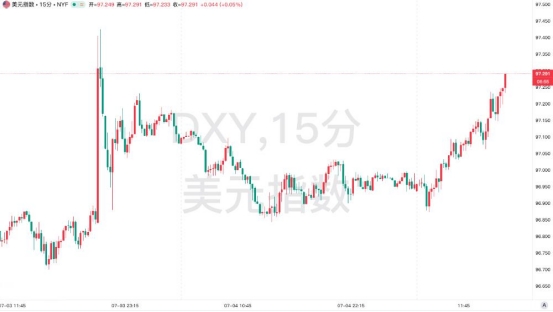Gaza ceasefire talks are deadlocked again. Can the meeting between Trump and Netanyahu break the deadlock?
- 2025年7月9日
- Posted by: Macro
- Category: News

In the early morning of July 7, local time, the first round of Gaza ceasefire negotiations ended in Doha, Qatar without any results. The Israeli negotiating team failed to reach an agreement with Hamas on the ceasefire due to insufficient authorization. At the same time, Israeli Prime Minister Netanyahu set off for the United States on the 6th and planned to meet with US President Trump on the evening of the 7th to discuss issues such as the Gaza ceasefire, the Iranian issue and the normalization of relations with Arab countries. The market is highly concerned about whether this meeting will release a breakthrough signal, especially whether Trump will make concessions to Israel in terms of tariff policy and military aid.

The core obstacle of this negotiation lies in the limited authority of the Israeli negotiating team. According to Palestinian sources, Israeli representatives can only discuss the distribution mechanism of humanitarian supplies and have no right to conduct substantive consultations on core issues such as the ceasefire period and the release of detainees. The ceasefire plan proposed by Qatar requires Hamas to release 10 Israeli detainees and return 18 bodies within 60 days, and Israel must release several Palestinian detainees. However, Israel insists on retaining the right to restart military operations, while Hamas requires a complete ceasefire as a prerequisite. The differences between the two sides on the nature of the ceasefire are difficult to bridge.
The Netanyahu government is facing strong demands from the public to immediately rescue the detained people, but it also needs to balance the hardline stance of the ruling coalition to "completely eliminate" Hamas. Hamas, which has been depleted of resources due to the long-term war, urgently needs a ceasefire in exchange for humanitarian aid, but lacks trust in Israel.
2. Trump-Netanyahu meeting: geopolitical game and policy compromise
This meeting was the third meeting between the two in six months, and the market focused on three major focuses:
Specific terms of the Gaza ceasefire agreement: Trump may pressure Israel to accept the Qatar plan in exchange for US support in terms of tariff exemptions, military equipment supply, etc. However, according to Israeli media reports, Israel has clearly rejected Hamas's request for a "permanent ceasefire" and is only willing to accept a temporary ceasefire in stages.
Iran nuclear issue and regional security: Trump plans to push for a "permanent agreement" with Iran, requiring Israel to make concessions on issues such as nuclear facility inspections and missile range limits. This move may trigger a strong backlash from Israel's right-wing parties, and Netanyahu may ask the United States to increase military aid to Israel in exchange.
Tariff policy and economic game: Although Netanyahu promised to eliminate trade barriers between Israel and the United States, Trump did not specify whether to grant Israel tariff exemptions. According to the US plan, tariffs for countries that have not reached an agreement will be restored to April levels on August 1, and Israel may face a 17% import tariff.
3. Fed Policy Expectations and US Dollar Credit Risk
The minutes of the Fed's June meeting, released on Thursday (July 10), will be a key catalyst for the market. CME's "Fed Watch" shows that the probability of keeping interest rates unchanged in July is 95.3%, and the probability of a 25 basis point rate cut in September has risen to 66.2%. Despite the strong non-farm data in June, the lagged impact of tariff policies on inflation may force the Fed to cut interest rates twice this year. If the minutes of the meeting send hawkish signals, the US dollar index may rebound, suppressing the short-term performance of gold; on the contrary, if the economic downside risks are mentioned, the rising expectations of rate cuts will boost gold prices.

In the short term, the progress of the Gaza ceasefire negotiations, the results of the meeting between Trump and Netanyahu, and the minutes of the Federal Reserve meeting will dominate the fluctuations of gold. If the geopolitical situation deteriorates further, the price of gold may rise to $3,350; if a ceasefire agreement is reached or the Federal Reserve sends a hawkish signal, gold may fall to the $3,300 mark.
Risk warning: escalating geopolitical conflicts, unexpected tightening of the Federal Reserve's monetary policy, and uncertainty in tariff policies. This article only represents personal opinions and does not constitute investment advice.
